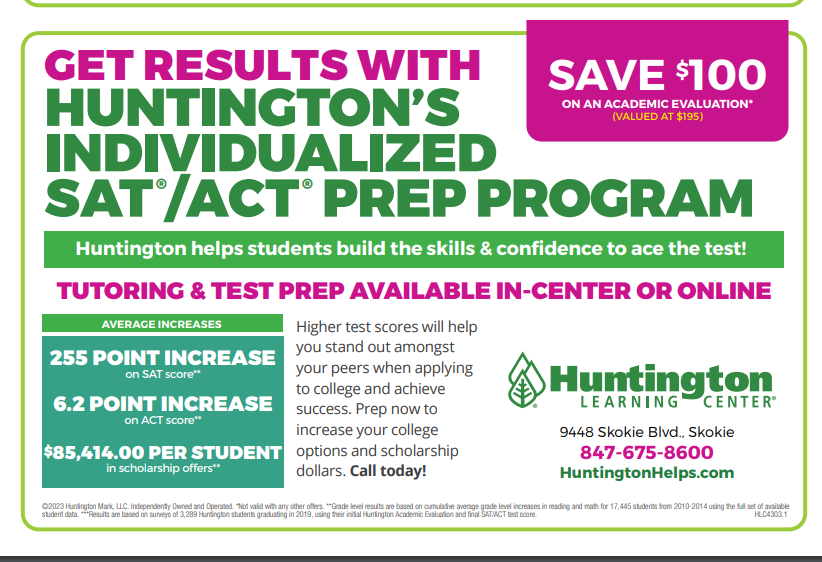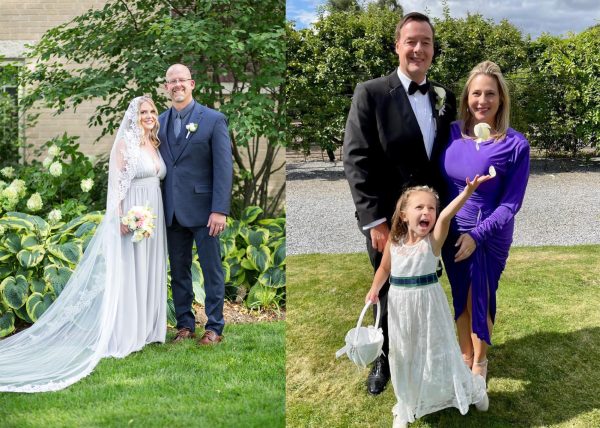Who can be trusted in the media? How publications work towards unbiased journalism in a politically-charged era
March 19, 2021
“A country divided as ever” has become commonplace in the modern American’s vernacular. It is no secret: a middle ground is hard to come by in today’s political climate.
The intense political polarization of recent years has made its way into peoples’ perceptions of the media, as a narrative has emerged which paints the media as the enemy of the people. Today’s journalists, from high school publications to national news outlets, walk a fine line against this narrative and must contend with the question: what is the responsibility of a newspaper?
Peter Applebome, a Deputy National Editor at The New York Times (NYT), acknowledged that all levels of news publications are facing heightened pressure to remain objective in their coverage. The NYT, a publication seen as left-leaning for its endorsements of Democratic candidates and its coverage of certain social issues, faces the scrutiny of a national audience. Applebome finds that the rise of social media has exacerbated the pressure faced by outlets; however, he believes that the fundamental principles of journalism still exist today.
“Journalists face enormous challenges in striving for objectivity and fairness in highly polarized times,” Applebome said. “There was a long period when the media really strived to be as down the middle as possible. But as the country has become so polarized to the point that facts are in dispute, not just opinions, there’s been much more pressure on journalistic enterprises to make judgments, to be a referee and not to reflexively give equal weight to all viewpoints if some are based on demonstrable falsehoods.”
In a Sept. 2020 Gallup poll, only nine percent of American adults surveyed said they had a “great deal” of trust in the mass media to fairly report the news. Sarah Nichols, president of the Journalism Education Association (JEA), a national organization dedicated to providing high school newspapers with educational resources, asserted that because of this recent shift in tone towards journalism, building trust with readers is one of the most vital things publications can do.
“We have to work harder to establish trust with our readers,” Nichols said. “I think a lot of that came from the last administration, with the whole ‘media is the enemy’ era, which we’re coming out of, but trust is like anything: once it’s damaged, it has to be rebuilt. People don’t trust the media, so I think it has changed us in terms of how we explain things or ways that we clarify why we do what we do.”
The Wall Street Journal (WSJ) is seen as a center-right publication by most media bias centers for its overall fair reporting and often right-leaning editorials. Joshua Jamerson, national politics reporter for the WSJ, emphasized that preconceived notions about the biases of certain publications affect people’s willingness to read them.
“When [interviewees] ask where I work and I say The Wall Street Journal, they take whatever preconceived notion they have about your outlet into the conversation,” Jamerson said. “Sometimes I talk to people who say ‘The Wall Street Journal is the only outlet that I trust anymore’ and it’s great when you hear that, but there’s some people who say ‘I’m skeptical of The Wall Street Journal for this reason or that reason,’ and you have to meet them where they are and explain to them why you are doing your job.”
Bias can be construed in a myriad of ways, including in photo choices and coverage, but most notably in the language used when reporting, Jamerson said. Certain words may drive away readers due to their connotations, Jamerson explained, and cause accusations of bias.
For example, Jamerson added, in the past at the WSJ, immigrants in the country without authorization were referred to as “illegal immigrants.” Questions over the use of this terminology were raised, and the idea of referring to such people as “aliens” also emerged, given that “alien” is the legal term. The WSJ settled on using terms such as “immigrants in the country without authorization” in order to capture both factual statements and avoid biased implications.
“You can have those discussions about ‘When we say XYZ, what do we really mean?’ and those are good ‘step back’ moments to make sure that you’re saying very plainly what’s happening without using a term that may carry water from one political party to another,” Jamerson said.
Jack West, editor-in-chief of The Harbinger, Auburn University’s campus newspaper, noted that “editorializing”—the injection of opinion into what is supposed to be a news story—can also impact the integrity of a publication and is taught to be avoided by his staff members.
“[Editorializing] is everything from ‘Don’t say this political party is better than that political party’ but even if you’re describing a story that’s outside, instead of saying ‘It was a beautiful day,’ which is your opinion, say ‘The sky was blue, the birds were out’ because all of those are fact checkable and they’re not opinion-based,” West said.
Nichols noted that because journalists are human, bias in some form is unavoidable. However, she finds that working to mitigate bias is of the utmost importance for journalists, especially young journalists. JEA provides curriculum for young journalists and Nichols added that avoiding bias is an integral part of that curriculum.
“Our efforts are geared towards ‘How can we help our students understand bias and engage with it in order to minimize it?’” Nichols said. “You can’t really prevent it. I think that’s something we’ve all evolved in, in our thinking because we have these inherent biases so we just have to operate around them and acknowledge and disclose them in different ways.”
At the professional level, mitigating bias looks like sending stories through a rigorous editing process before publication, Applebome said. The story is edited by a primary editor, the national editor, a second reader, the Standards Department (a department of the NYT dedicated to monitoring language and bias) and the News Desk, give or take a few levels depending on the prominence of the story.
Jamerson stressed that representing multiple viewpoints in a story is crucial for a newspaper’s objectivity; however, Applebome warned against the trap of false equivalence — calling two viewpoints equal simply because they differ, even if they lack equal evidence-based weight. Nonetheless, Jamerson finds it to be the job of a newspaper to offer an access point to every point of view.
“If you’re telling a story with all sides that touch the story, it almost matters less if it’s negative or positive, as long as you are making sure that everyone is represented,” Jamerson said. “The more you do that, the less you really need to placate one side or the other because you’ll have evidence.”
High school level journalism involves a similar editing process, including a thorough evaluation of whether or not each story accurately reflects every relevant perspective. Nichols addressed that in recent years, however, misinformation has made its way into publications, often affecting the integrity of a newspaper. She stressed that, although student journalists are trained to be fair and equal, coverage and reporting should not be inaccurately balanced with false information.
“Some of our journalism really fell short because we were trying to give equal time to things that were lies and conspiracies and false rhetoric because we thought we had to,” Nichols said. “We didn’t want to be called ‘biased’ or yelled at by our students so I don’t think it’s the newspaper’s staff’s job to make it equal. It needs to be fair, it needs to be representative of the audience, but it doesn’t have to be equal and I think we’re finally acknowledging that.”
Unlike professional publications, high school Editorial Boards are composed of students who have chosen to contribute to the newspaper, often resulting in a seemingly unbalanced political make-up. Ella Marsden, co-Editor-in-Chief of Libertyville High School’s Drops of Ink reaffirmed that their staff is careful to uphold impartiality when reporting, however, acknowledged that their coverage can be impacted by members of their staff.
“People have different experiences and backgrounds that will have them think of different story ideas,” Marsden said. “[There are] lots of conservative members in our community and that’s just not who we have on staff and we try really hard to get a more diverse staff, belief wise, but we cannot figure out how to get more people to join.”
While disagreements over the coverage of contentious topics in high school publications are common, one of the most polarizing is the inclusion of political stories in high school publications. While some believe that politics have no place in this level of journalism, Nichols finds that the newspaper helps high school students obtain a better understanding of national politics before they engage in the democratic process.
“You’re helping students navigate issues where they’re just on the cusp of involvement,” Nichols said. “Yes, a lot of readers can’t vote, but pretty soon, they can vote, and they need to know and pay attention. There are so many relevant things to a teenager that are happening in politics, so it definitely should be addressed.”
When writing about national politics, the credibility of the publication lies on their ability to include all relevant information in their stories, regardless of the community’s political make-up. Jamerson noted that an important aspect of covering politics is challenging the views of majority readers by forcing them to explore opposing perspectives.
“It means not just looking at who your readers are and what they might want to know about their interests but also giving them the information they need to know if there is another set of facts that might be outside of their bubble,” Jamerson said. “I think the better we as journalists do at understanding that gatekeeper role and being fair, the better off our readers will be no matter if our readership is mostly liberal or conservative or evenly split down the middle.”
Despite the challenges faced by newspapers in a climate with such a scrutinous eye, the press is still a vital aspect of American society. Protected as one of the five freedoms of the First Amendment and founded on the idea of giving a voice to the voiceless, the press still has a responsibility to represent the views of all people. Applebome stressed that the rhetoric currently surrounding the media is misplaced: the responsibility of a newspaper is not unattainable objectivity, but fairness.
“Journalistic enterprises at all levels, from the high school newspaper to the NYT, have to make informed judgments,” Applebome said. “You can’t be completely objective; you can try and be as fair as possible but you make subjective judgments all the time. The question is more about striving for fairness rather than a notion of perfect objectivity which doesn’t really exist.”










